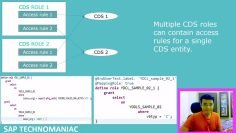This video discusses the concept of left outer join cardinality in SAP HANA. It provides a detailed explanation of how left outer joins work with different cardinalities and how they affect the performance of database queries.
After watching this video, you will learn:
- The concept of left outer join cardinality. The video explains how left outer joins work with different cardinalities, such as one-to-many and many-to-one relationships. It also discusses how these cardinalities affect the formation of joins at the database level.
- How left outer joins work in different scenarios. The video demonstrates how left outer joins behave differently depending on whether you fetch data from the right-hand side table or not. It shows that in some cases, even if you don’t fetch data from the right-hand side table, a join is still formed.
- The impact of specifying cardinality in left outer joins. The video explains how specifying cardinality in left outer joins can affect the performance of database queries. It shows that when you specify a one-to-one cardinality, the database optimizer can avoid forming a join if you don’t fetch data from the right-hand side table, thus improving query performance.
- The use of aggregate functions in left outer joins. The video shows that when you use aggregate functions like count(*) in a left outer join, the database optimizer can avoid forming a join, thus improving query performance.
- Practical examples of left outer joins. The video provides practical examples of left outer joins in SAP HANA, showing how to create a CDS view entity, how to create a program to fetch data from the CDS view, and how to check the native SQL statement that is actually executed on the database.

































